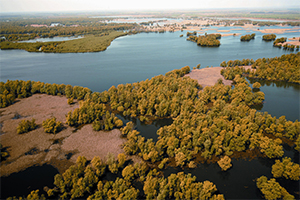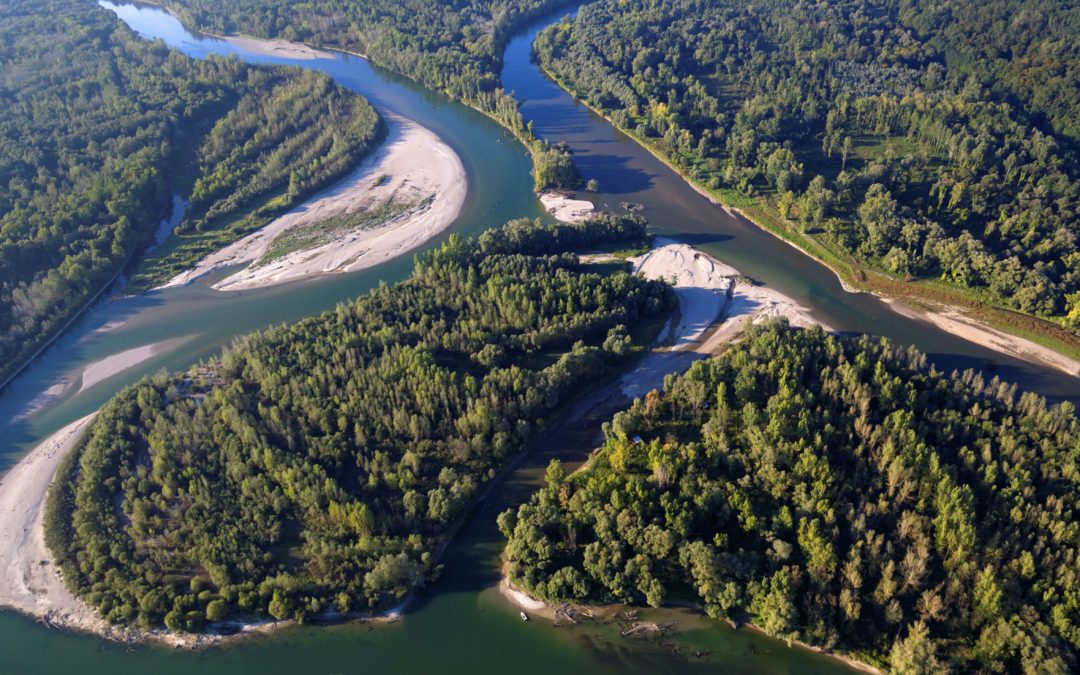The 5-country Biosphere Reserve Mura-Drava-Danube (TBR MDD) is an initiative to jointly protect the most natural stretches of Mura and Drava together with the adjacent Danube section, in a cooperation of five countries: Austria, Slovenia, Croatia, Hungary and Serbia. While many institutions – including Protected Areas, Municipalities, and NGOs – have been working on this idea since the 1990ies, a big step forward happened in 2011: The Environment Ministers from all five countries signed a Ministerial Agreement for the preparation of the establishment of the TBR MDD, at the occasion of an informal Environment Ministers Council hosted by Hungary and the then EU Commissioner for the Environment Janez Potočnik.
Since then, the designation of national or bilateral Biosphere Reserves has happened in all five countries: Croatian-Hungarian TBR MDD was designated in 2012, followed by Serbian BR Bačko Podunavlje in 2017, Slovenian BR Mura River in 2018, and Austrian BR Lower Mura Valley in 2019. Now all prerequisites are set to join these individual BRs under the roof of the world’s first 5-country Biosphere Reserve!
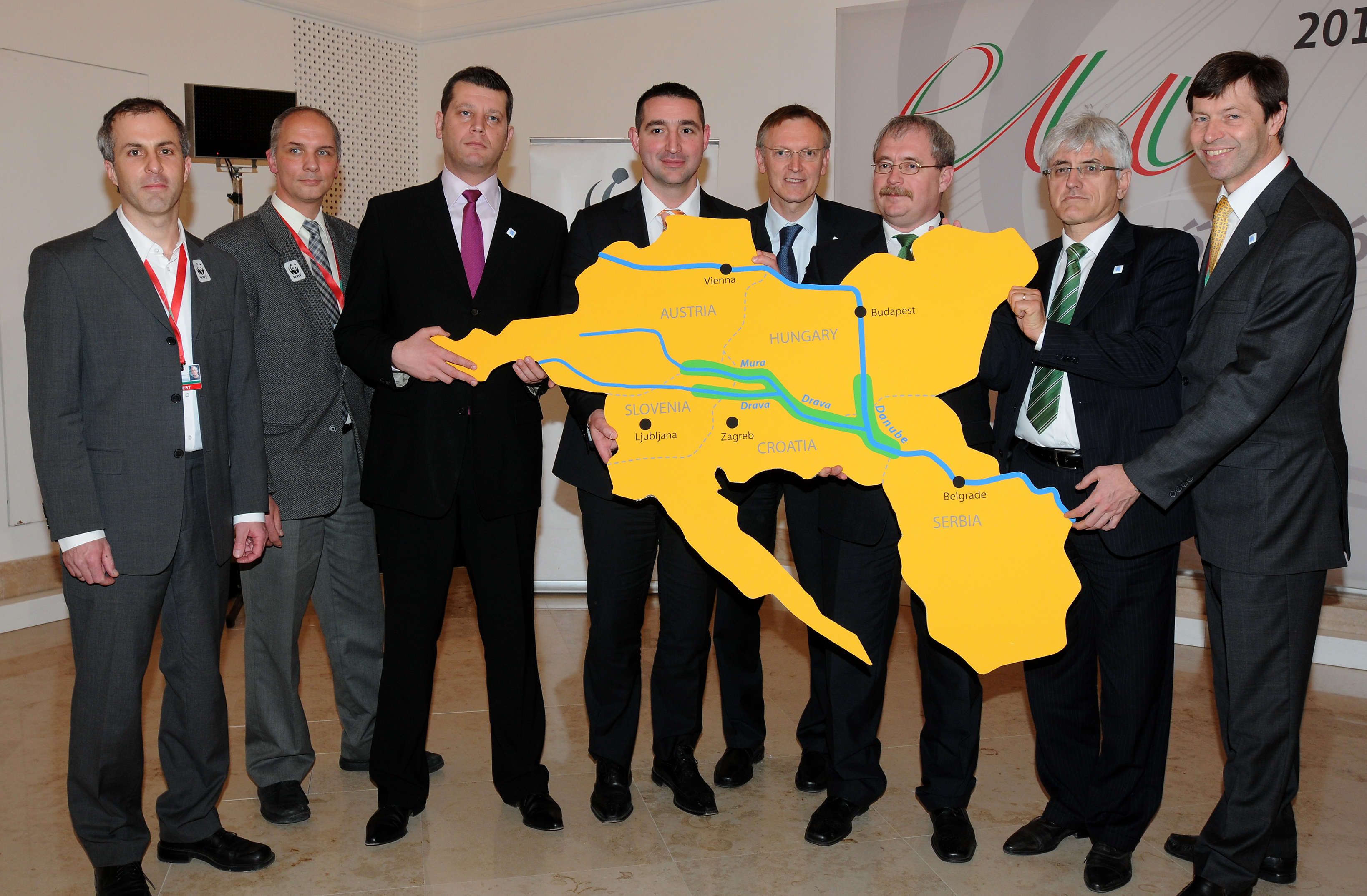
The 5-country ministerial signing in 25 March 2011 © WWF
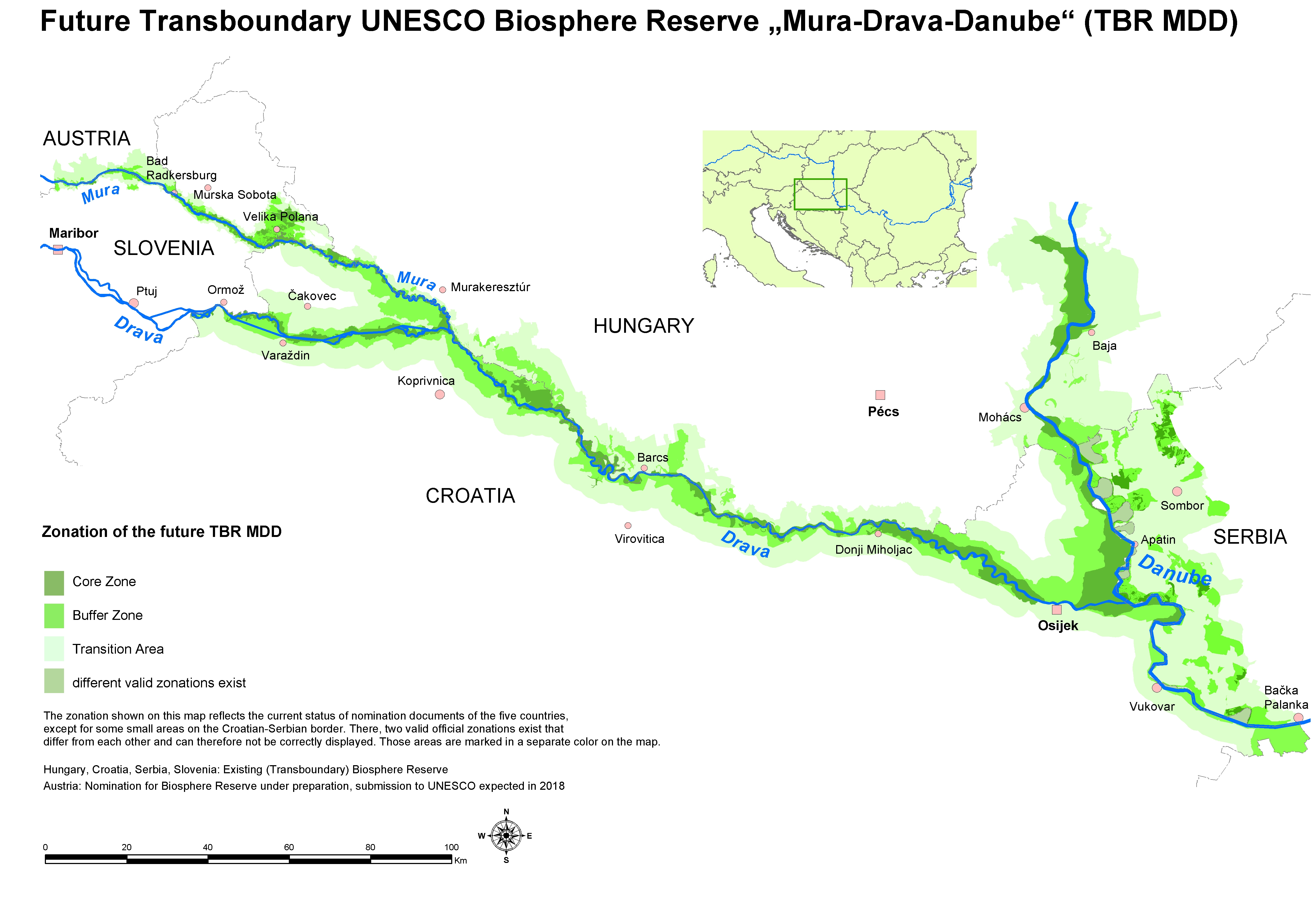
Map of the Mura Drava Danube Transboundary biosphere Reserve © WWF
Dynamic rivers hosting incredible biodiversity
The three rivers connecting five countries are one of the main ecological corridors in the Danube River Basin, the largest wetland complex in Central Europe, and host some of the most outstanding biodiversity of the region. The rivers give space to numerous threatened species: the partly preserved dynamic processes of the rivers provide habitats like steep eroded banks or gravel islands – important breeding habitats for river birds. Shallow gravel areas and well-connected flooded meadows provide spawning grounds for (migrating) fish. The trilateral area between Hungary, Croatia, and Serbia shows the highest breeding density of White-tailed Eagle in Central Europe. Because of all these natural values, the area is often called the “Amazon of Europe”, which can truly be felt when paddling along the rivers.
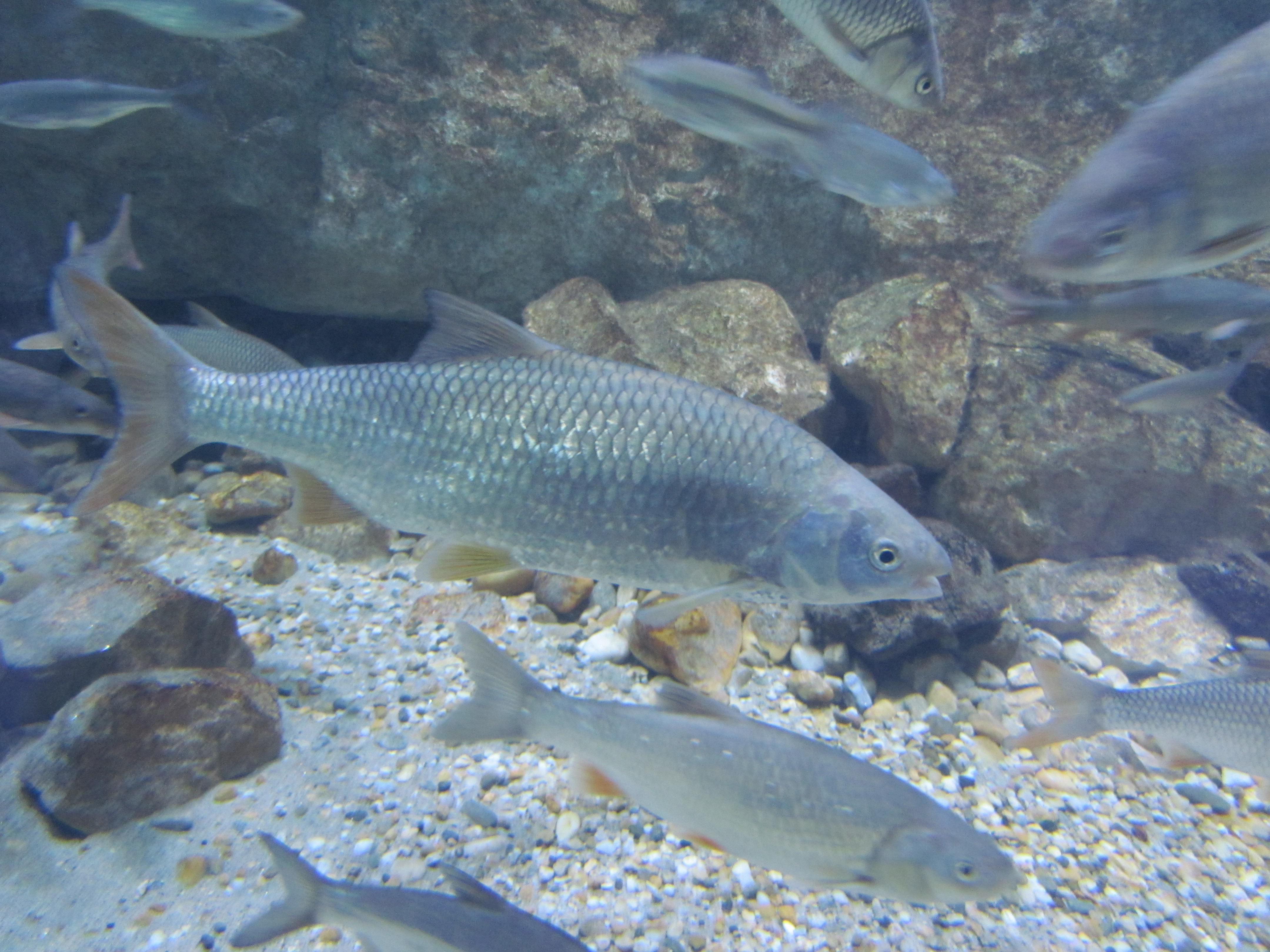
Chondrostoma nasus © Aleksander Koren
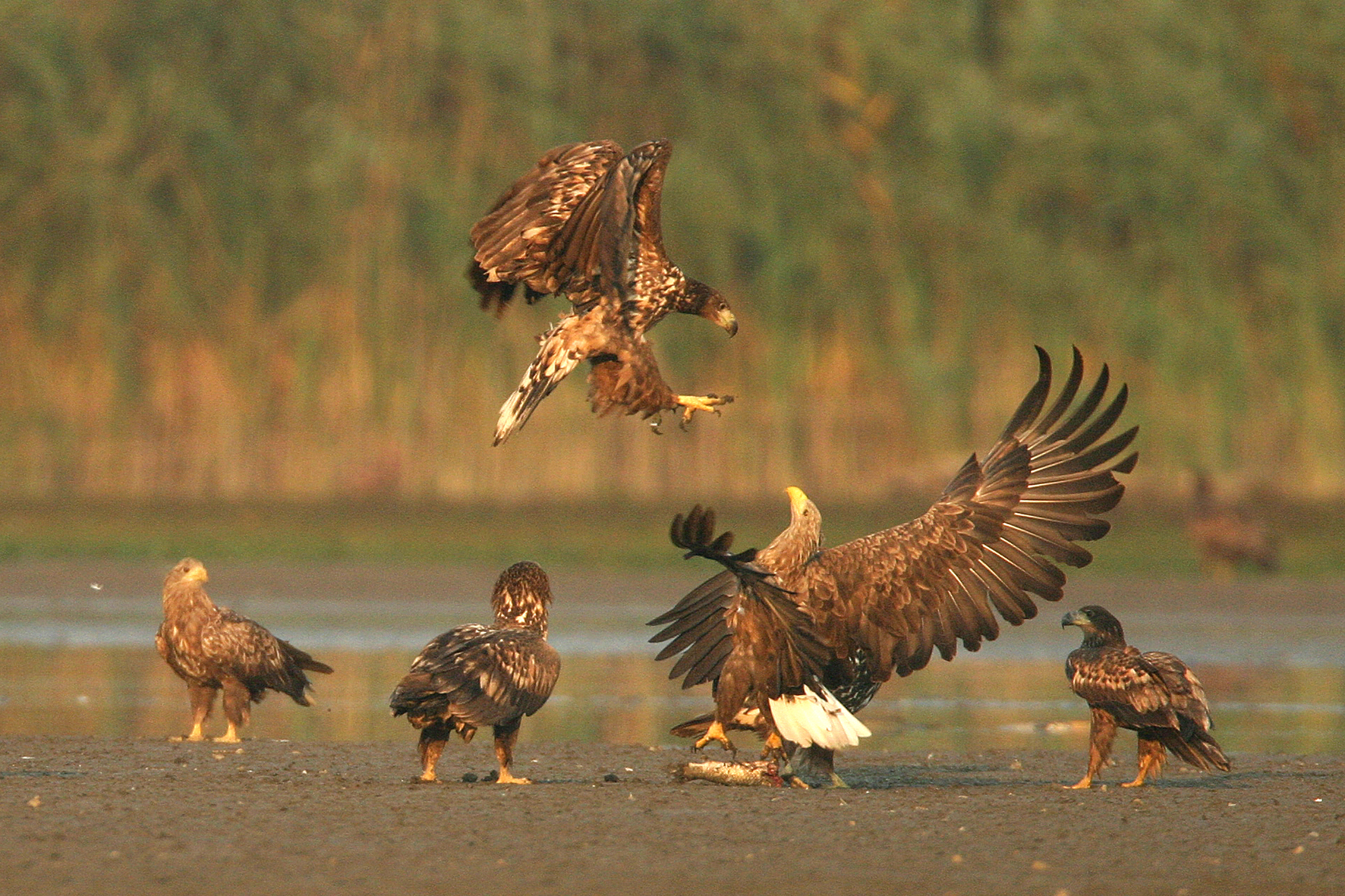
Seeadler © M. Romulic
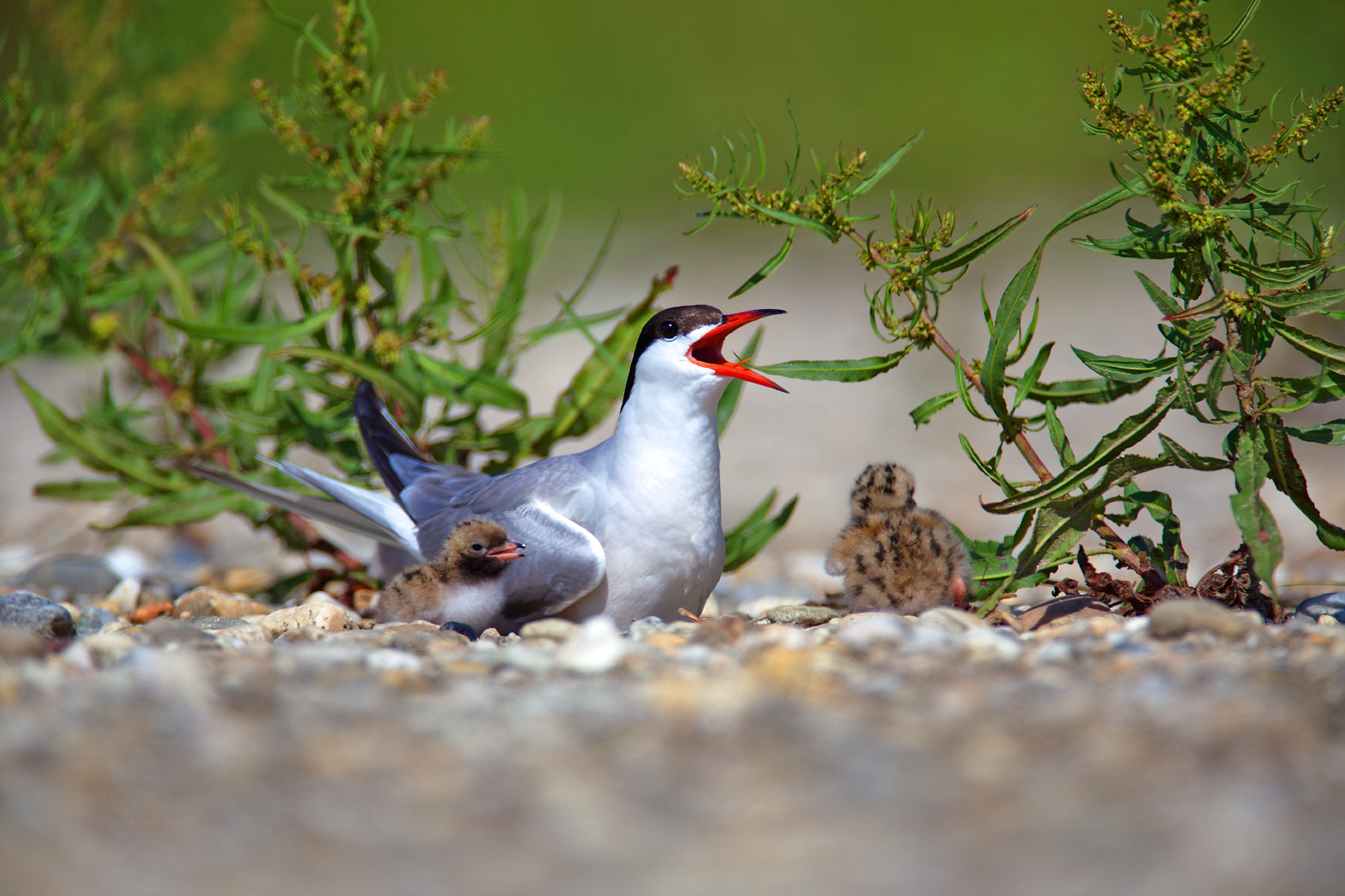
© Goran Safarek
At the same time, ecosystem services provided by intact river ecosystems are highly important for quality of life for people in the region: wide enough floodplains protect villages from floods. The groundwater sources refilled by the rivers provide healthy drinking water for the region. The impressive landscape offers opportunity for relaxation and tourism, including sunbathing, swimming, canoeing, cycling, angling, and much more.
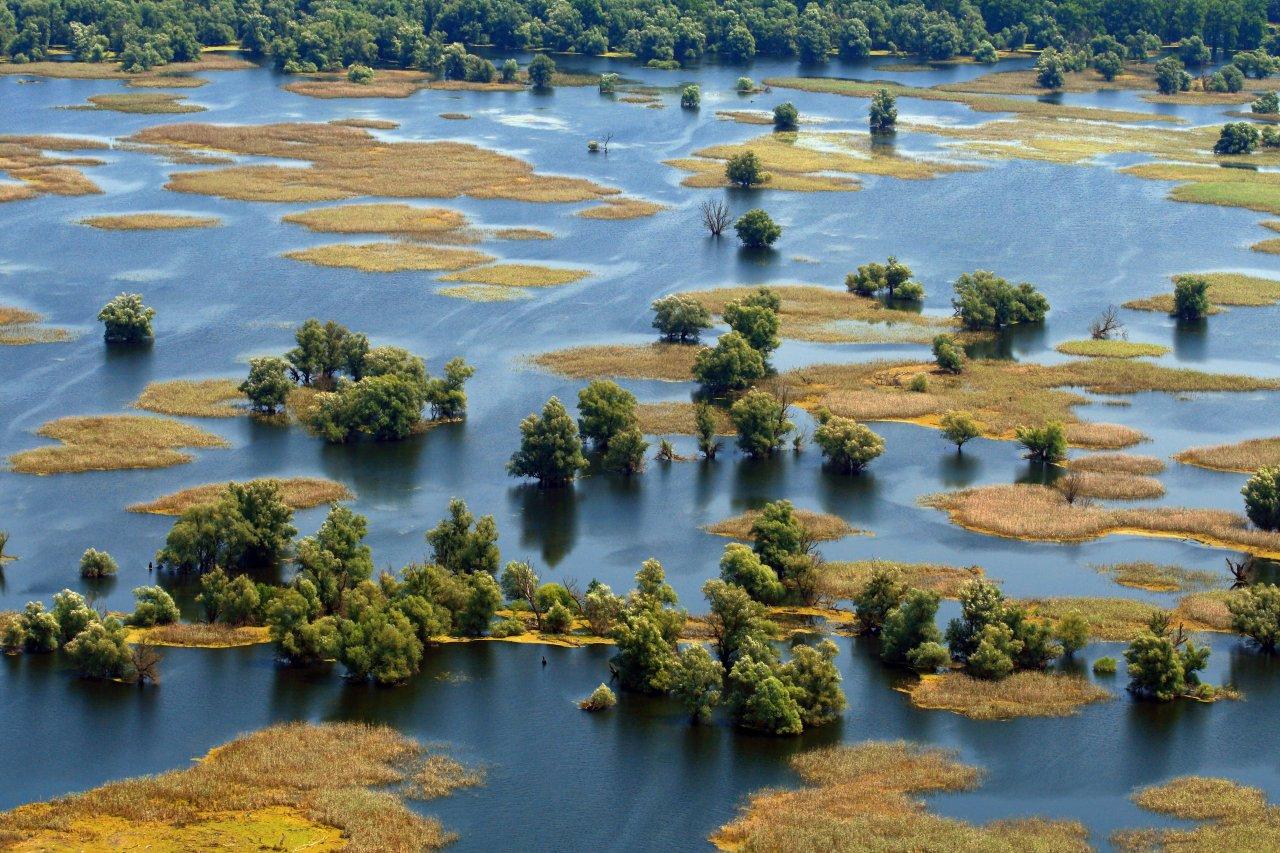
Kopacki Rit © Mario Romulic
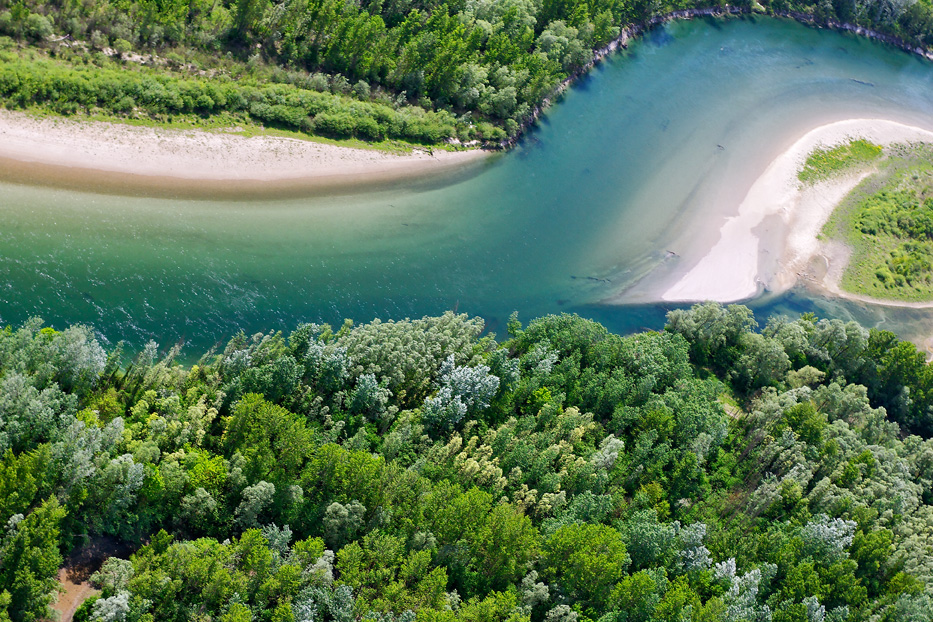
Drava River © Goran Safarek
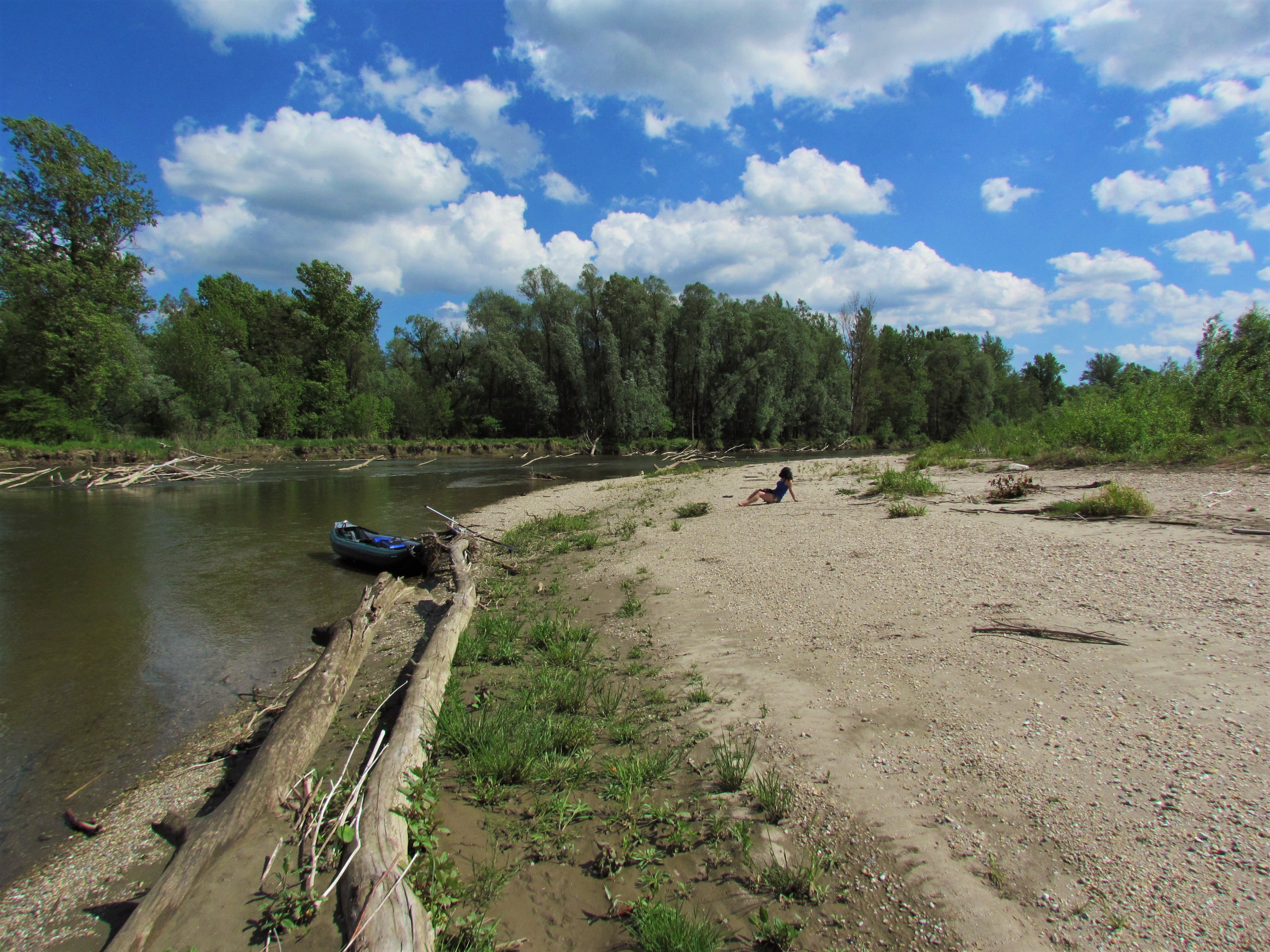
© IRSNC Aleksander Koren
Cooperation for better management
To prepare for the joint coordinated management of the future 5-country TBR MDD, countries joined together in the project coop MDD, financed by the Danube Transnational Programme: From January 2017 to June 2019, for the first time Protected Area managers from all five countries cooperated to discuss the future coordinated management of the “Amazon of Europe”. This led to the creation of the “Transboundary Cooperation Programme for the future 5-country Biosphere Reserve Mura-Drava-Danube”. It consists of three strategic transboundary documents that were developed in a joint process including numerous workshops, written feedback rounds, questionnaires and working groups. For all three documents, implementation started immediately.
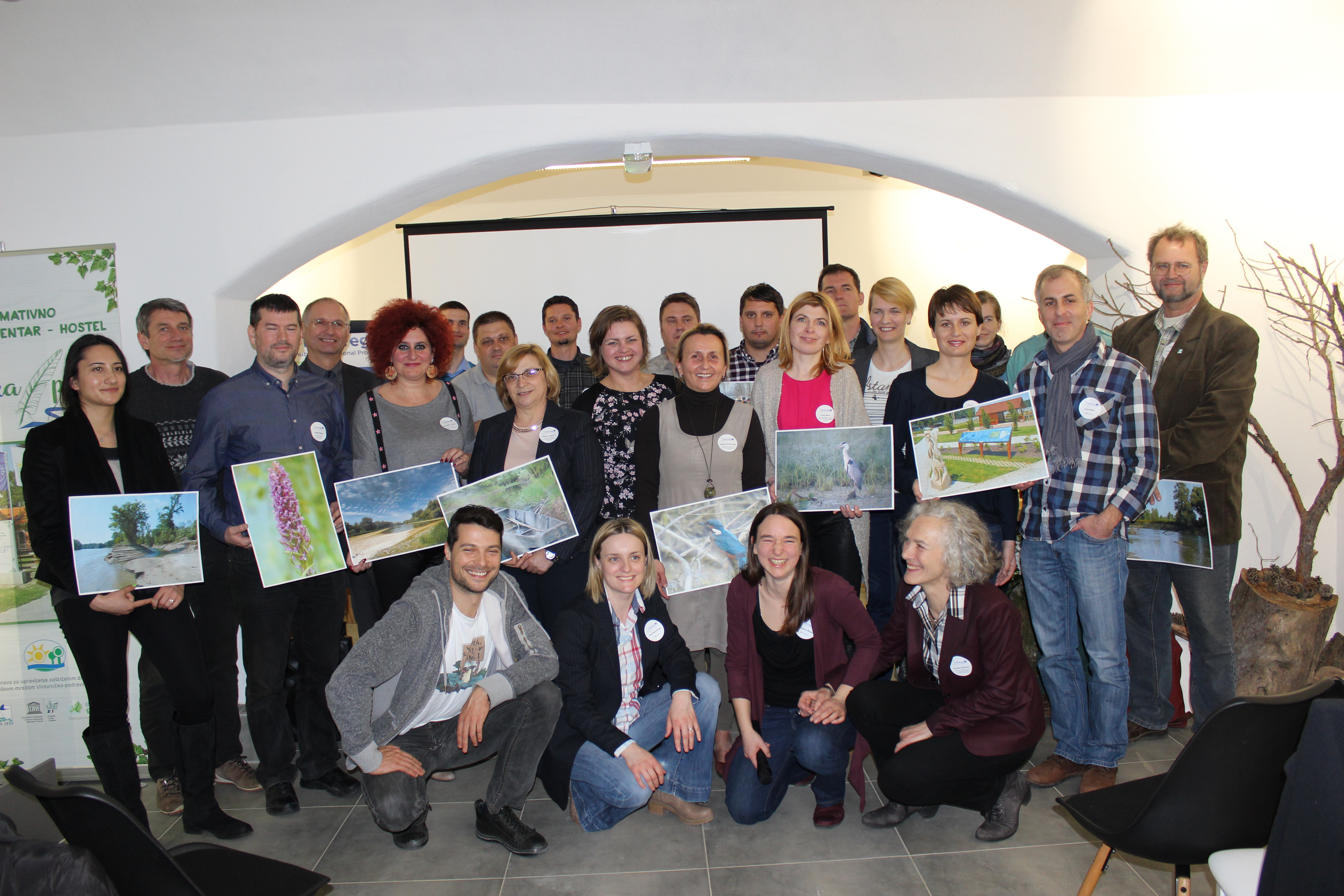
Partnership at KickOff © WWF
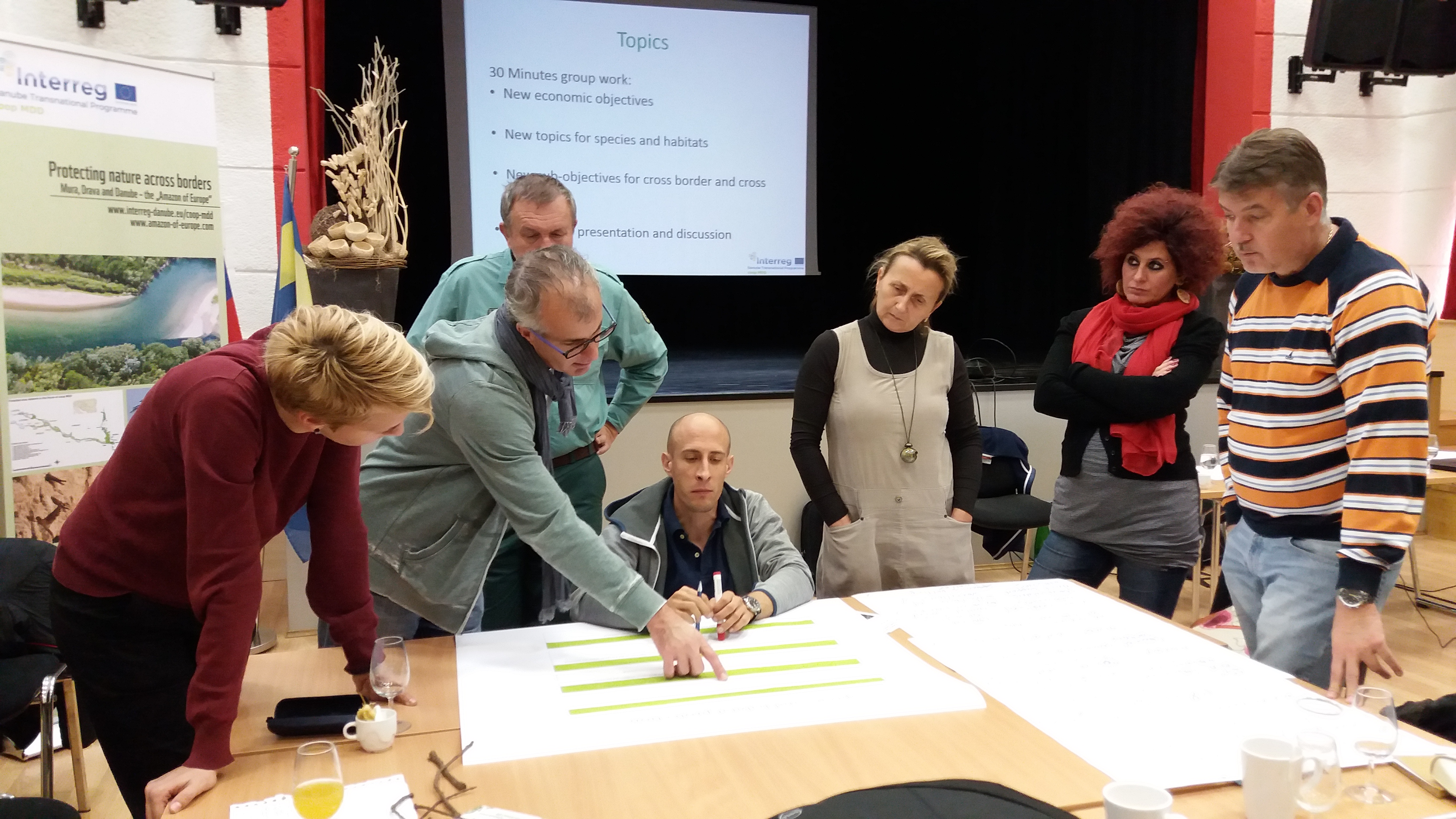
Workshop © WWF
Guidelines for a dynamic river corridor
The Guidelines deal with all fields of Protected Area management, being: 1) Cross-border and cross-sectorial cooperation, 2) Species and habitat protection, 3) River management and engineering, 4) Fish ecology and fishery, 5) Forest management and forestry, 6) Meadow management and agriculture, 7) Game management and hunting, 8) Visitor management, Education and Tourism, 9) Spatial planning and regional development.
Based on an analysis of obstacles, joint objectives were formulated that shall be reached by the future management. For each chapter, a joint vision summarizes this “status quo of the future”. It is incredibly important to have a joint direction that leads all future steps, from local to transboundary level – this was achieved by the formulation of the Guidelines.
Partners then developed Local Action Plans within a participatory process in their region, involving all necessary stakeholders. These Local Action Plans will implement the Guidelines – in a specific region and/or for selected topics. The focus in each region is quite diverse and reaches from river restoration, species protection programmes or implementation of forest management objectives into the functioning of a forestry company, to environmental education.
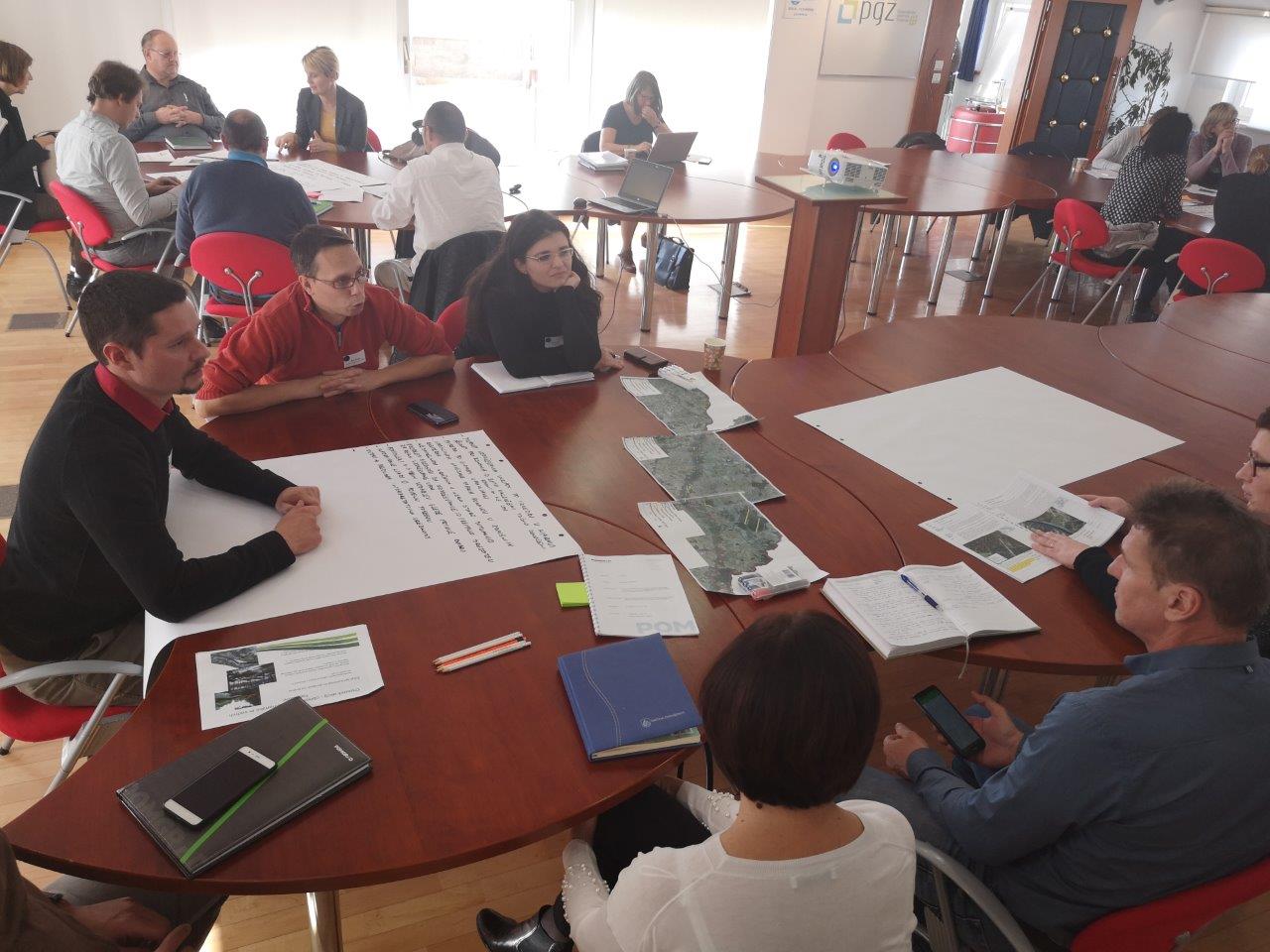
Stakeholder workshop © IRSNC
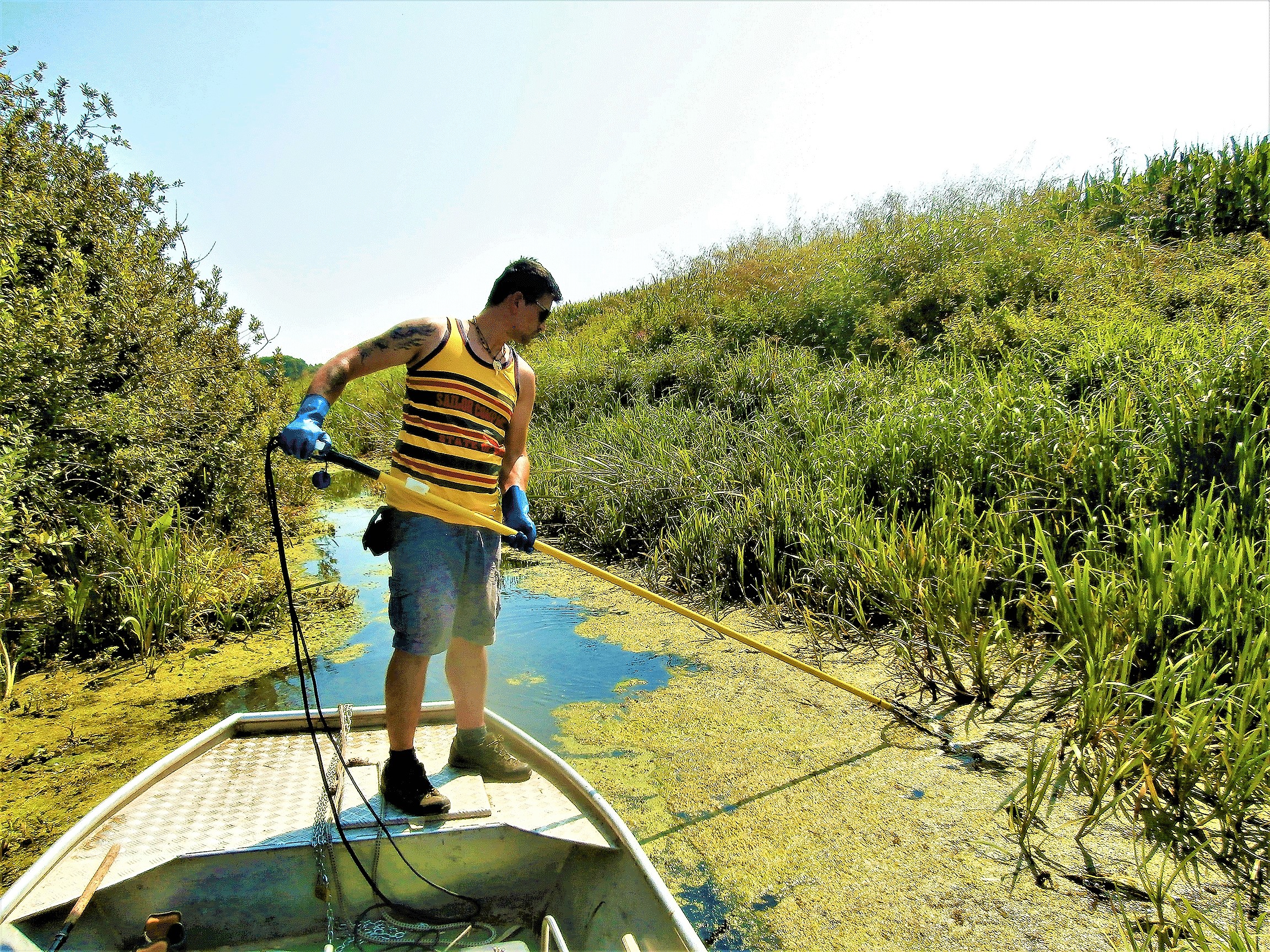
Fish monitoring © PI for nature protection of Virovitica Podravina County
Transboundary Learning Network Concept of RIVER’SCOOLs
The TLN Concept provides the framework for the first transboundary educational offer, functioning as a network of so-called RIVER’SCOOLs. These are outdoor learning centres, providing opportunity to experience and learn about the TBR MDD and the tremendous natural values protected here. The TLN Concept defines the visual appearance and joint infrastructure elements. These ensure a basic set of information about the whole 5-country region and visualize the connectivity along the rivers. They also serve the visual recognition, so for the first time travellers along the rivers will perceive this network and thus the whole region as one, across all borders. The didactic framework concept guarantees an experience-oriented learning style in all educational offers to be booked in the RIVER’SCOOLs.
Eight partners now set up their RIVER’SCOOLs at the rivers or in the floodplain, with all common elements and many different additional features: Some contain fireplaces, bird watching towers, or a stilted path to observe different forest canopy layers. All the equipment is there to experience nature in different ways: binoculars for observing birds, microscopes for discovering the tiniest organisms like insects, boats for travelling along the river, or different tools for didactic games.
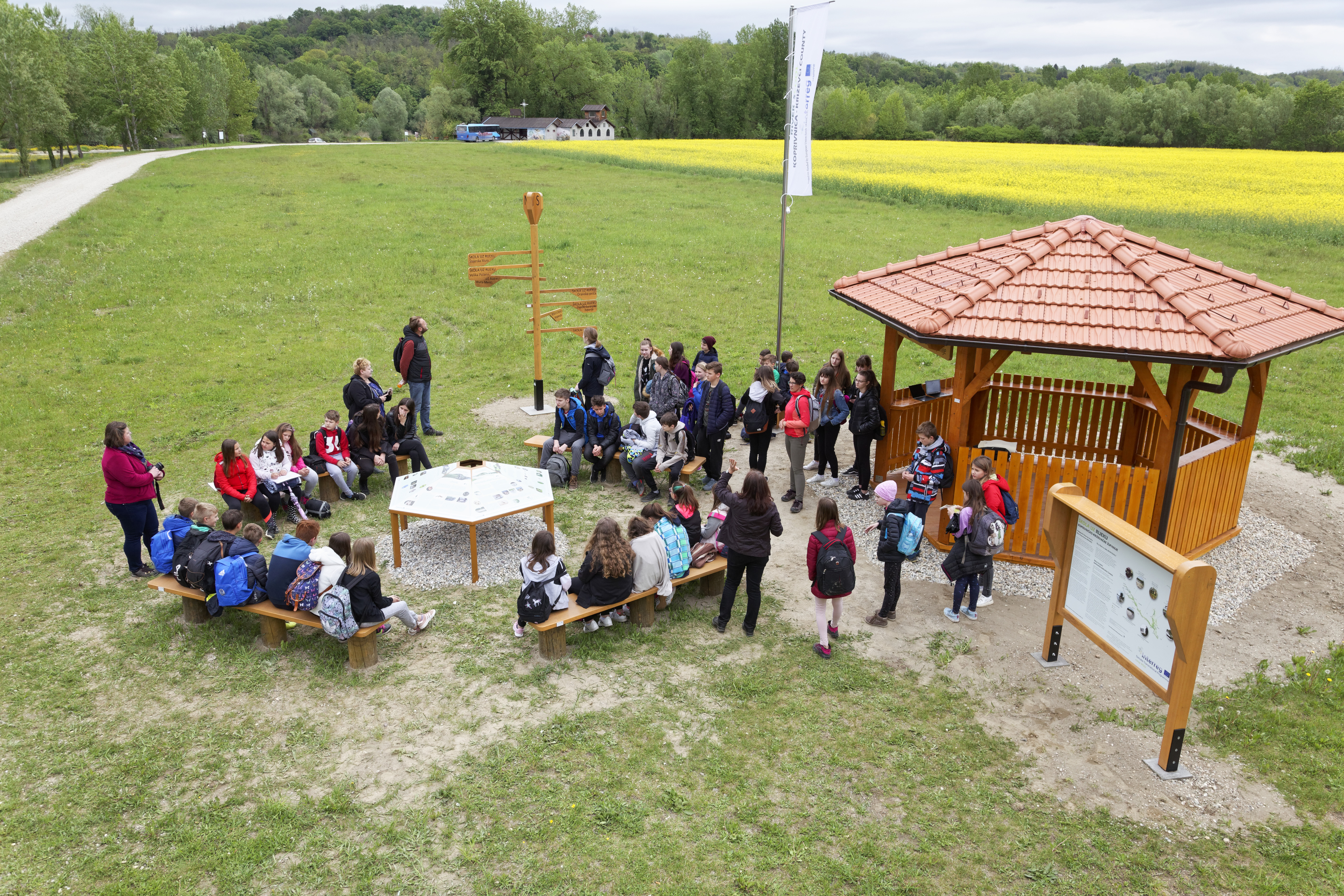
RIVERSCOOL Koprivnica Krizevci County © PI for nature protection of Koprivnica Krizevci County
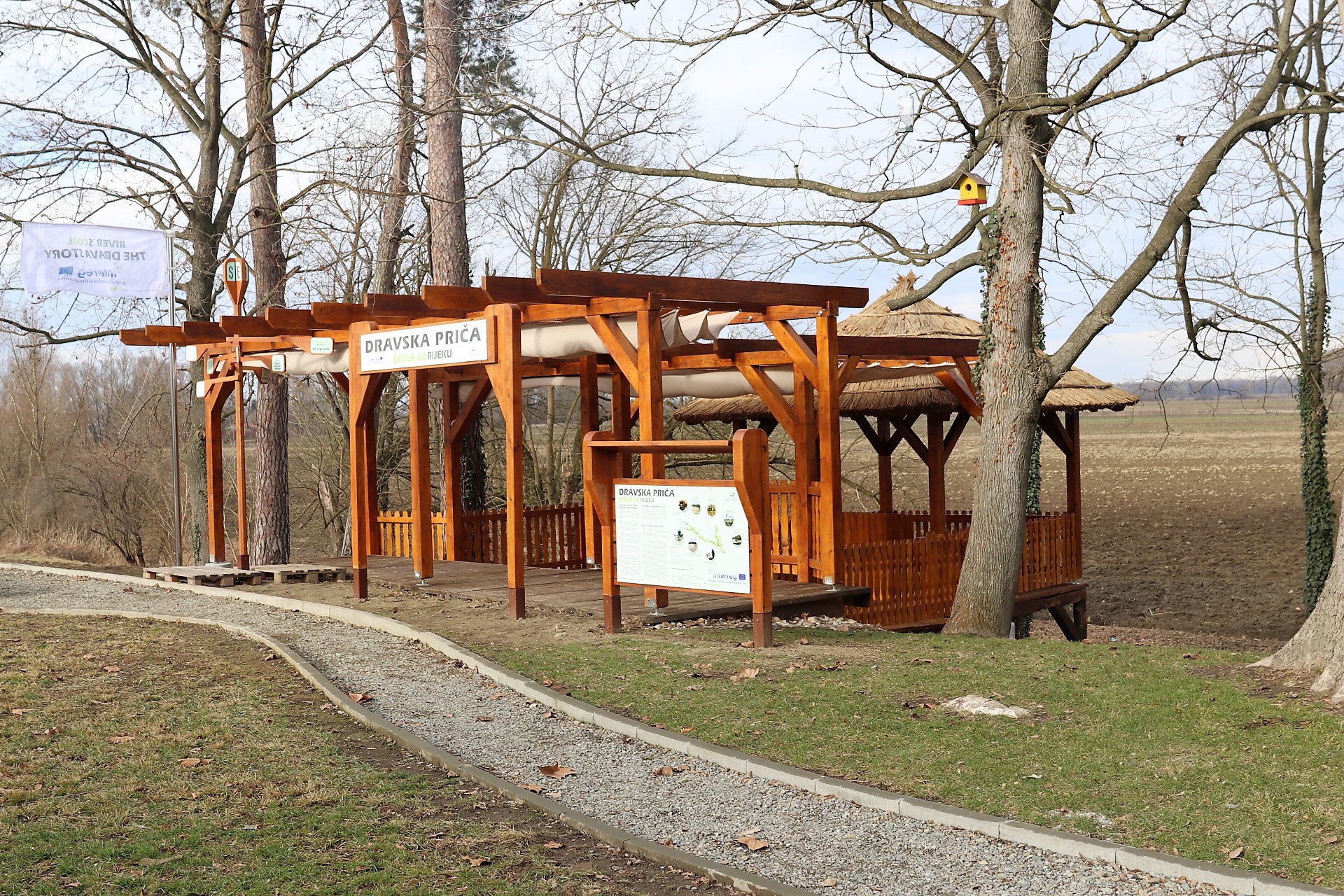
RIVERSCOOL © PI for nature protection of Koprivnica Krizevci County
Transboundary Mura-Drava-Danube Action Plan
Based on the first two documents, partners assessed also the necessary measures that need to be taken, especially for reaching the objectives detailed in the Guidelines. The measures are numerous, but many have to be implemented on local or national level. Thus, the partnership focused on developing further those measures that need to be implemented or at least initiated on the 5-country level. 27 actions are described in the Action Plan, summarized under five chapters: 1) Coordination & Communication, 2) Species and habitat protection, 3) Research & Education, 4) Sustainable Use, 5) Strategic planning. Within working groups, the partnership focused especially on those actions that were ranked as having the highest priority for implementation.
These are:
- to establish a long term management structure for the TBR MDD
- to develop a visual identity and communication strategy for the TBR MDD
- to establish a long-term development partnership
- to implement a joint basic monitoring program
- to create a coordinated species and habitats protection program
- to implement joint actions against illegal killing of water birds and birds of prey
- to implement joint efforts for breeding sites of river birds
- to strengthen and expand the network of RIVER’SCOOLs
- to improve in ecological terms the operation of existing hydropower plants
- to set up a common data platform
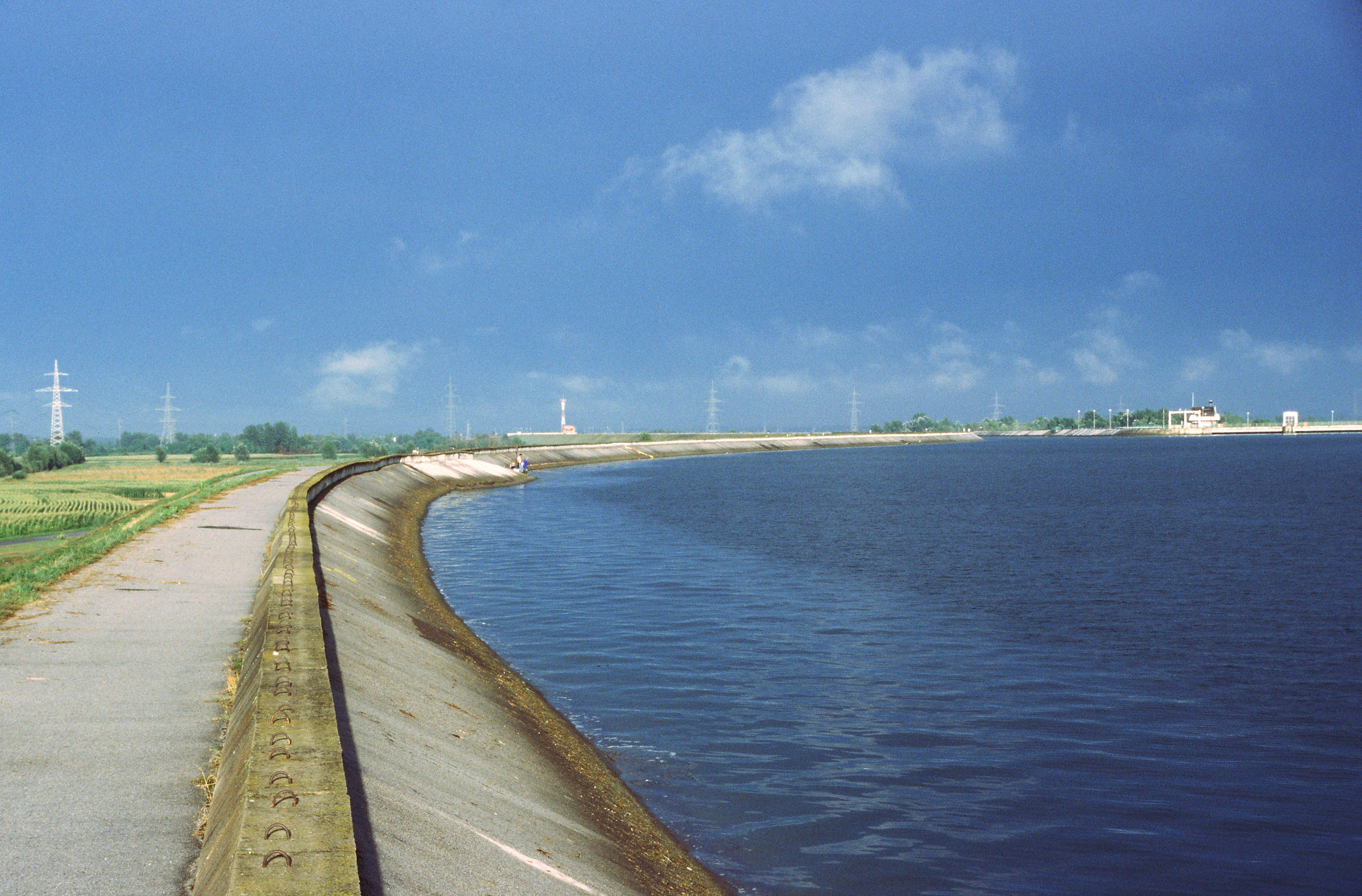
Hydropower threat © Arno Mohl – WWF
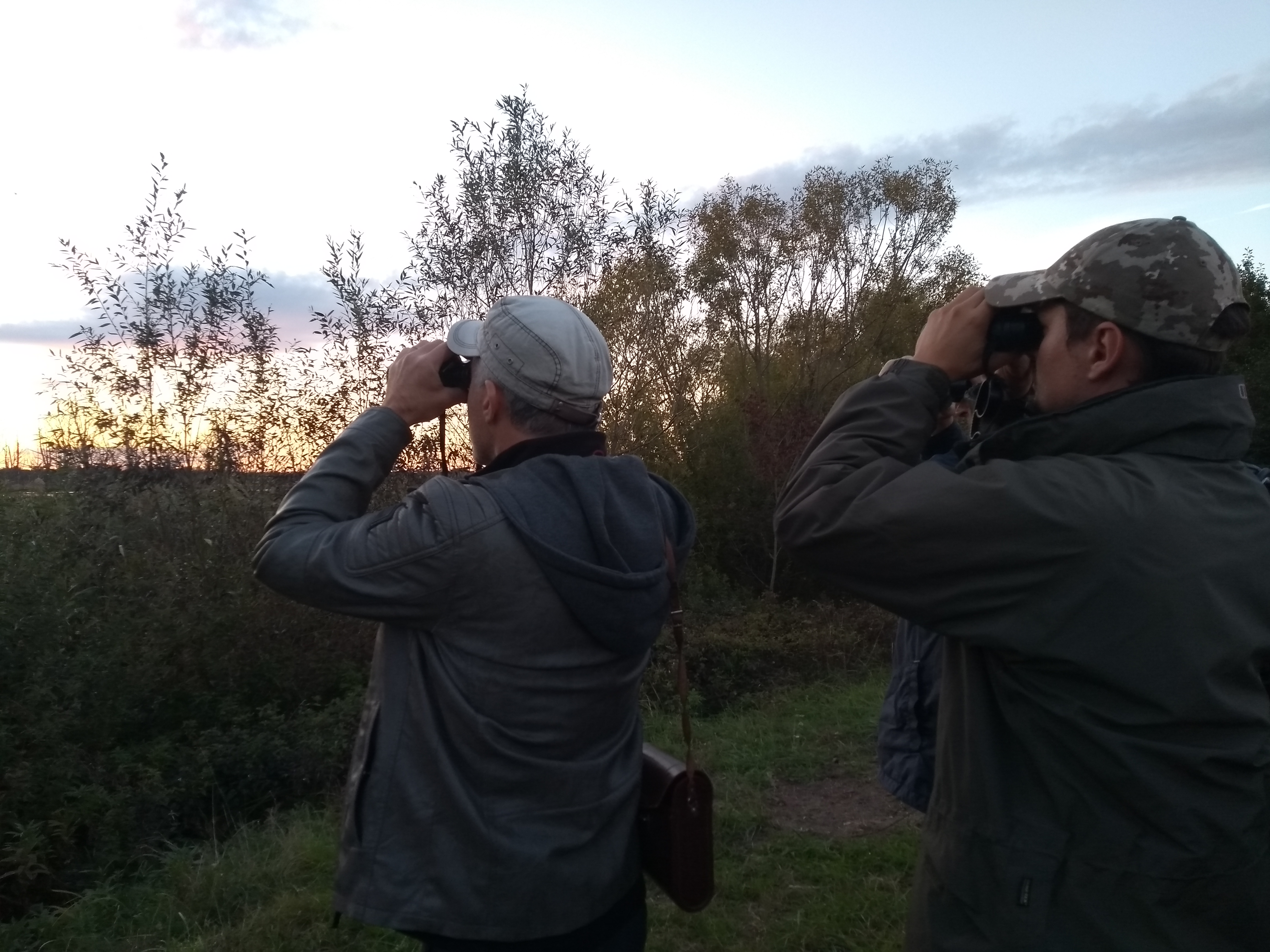
Monitoring © Magdalena Wagner – WWF
Outlook to the future
Project results are already in use in numerous ways, and next steps for cooperation are under way:
All project partners and all further managing institutions of Protected Areas within the TBR MDD have signed a Cooperation Agreement at the Final Conference, stressing the will to cooperate further for the implementation of the 5-country Biosphere Reserve and to implement step by step the transboundary management aims developed within coop MDD.
A part of the project partnership has submitted a follow-up project proposal to the Danube Transnational Programme, lifelineMDD. There, it is planned to assess on transboundary level the status quo of the river corridor with study of bio-indicators (fish and river birds) and abiotic framework conditions (river training structures, sediment transport, climate change). Based on this, a river restoration strategy should be developed with cross-sectoral partnership between nature protection and water management.
Most importantly, the 5-country Coordination Board for the establishment of the 5-country TBR MDD is now – in summer 2019 – preparing the nomination form to UNESCO for the pentalateral Biosphere Reserve. Coop MDD project results are integrated there, mentioned as good practice examples, or will be used as basis for future projects.
We are looking forward to finally fully establishing the world’s first 5-country Biosphere Reserve Mura-Drava-Danube, and to many more years of cooperation, projects, and joint initiatives!
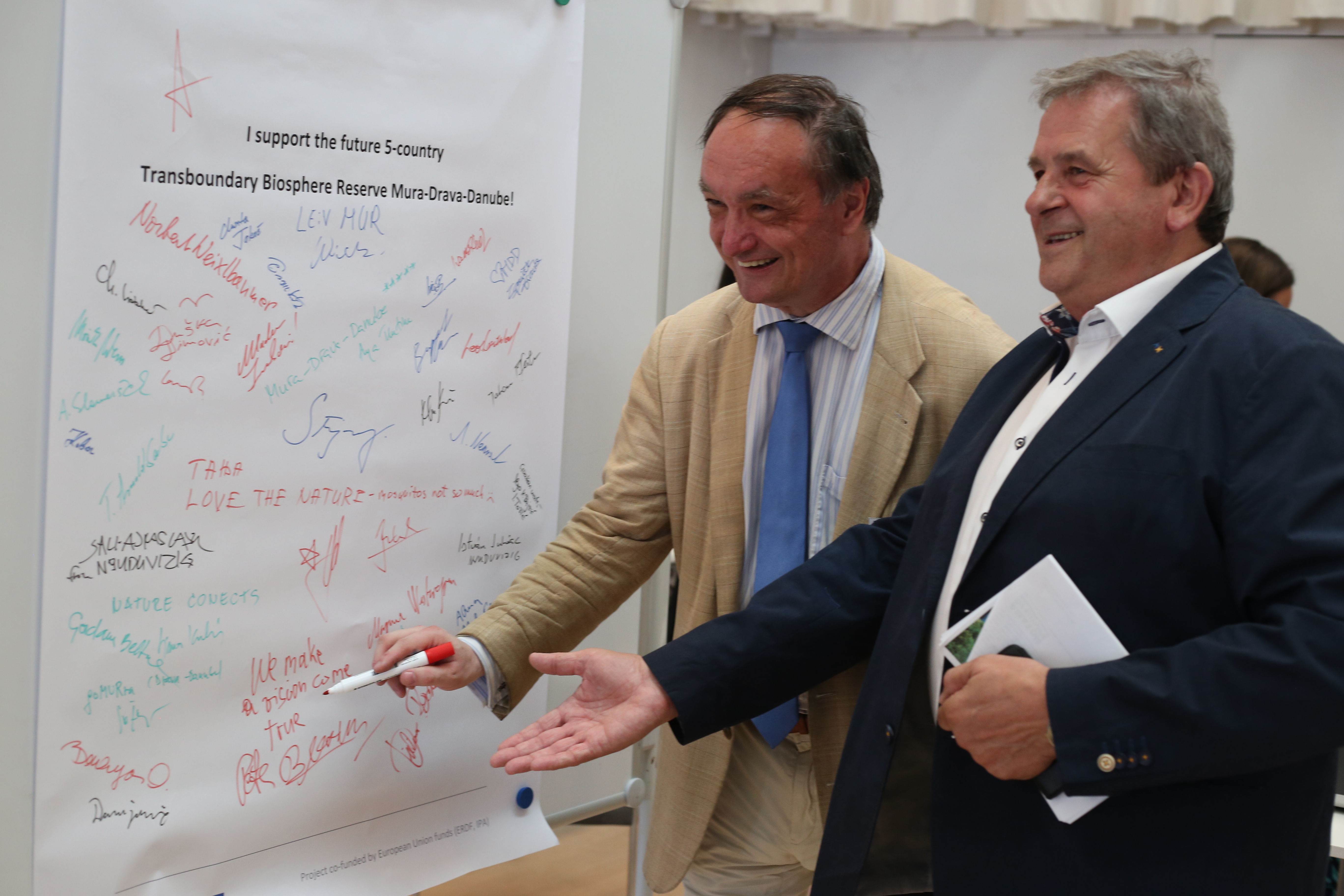
Final Conference © WWF
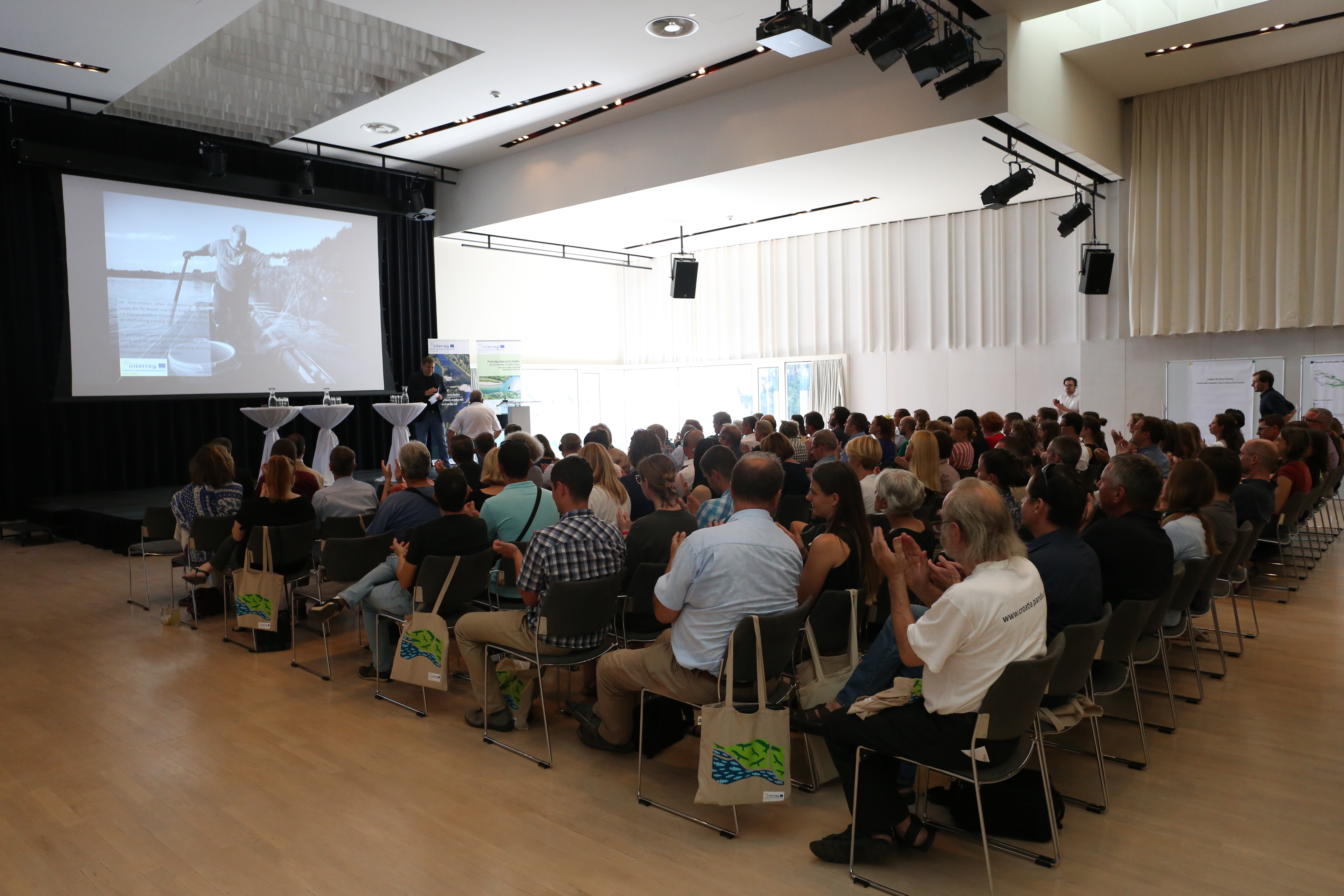
Final Conference © WWF
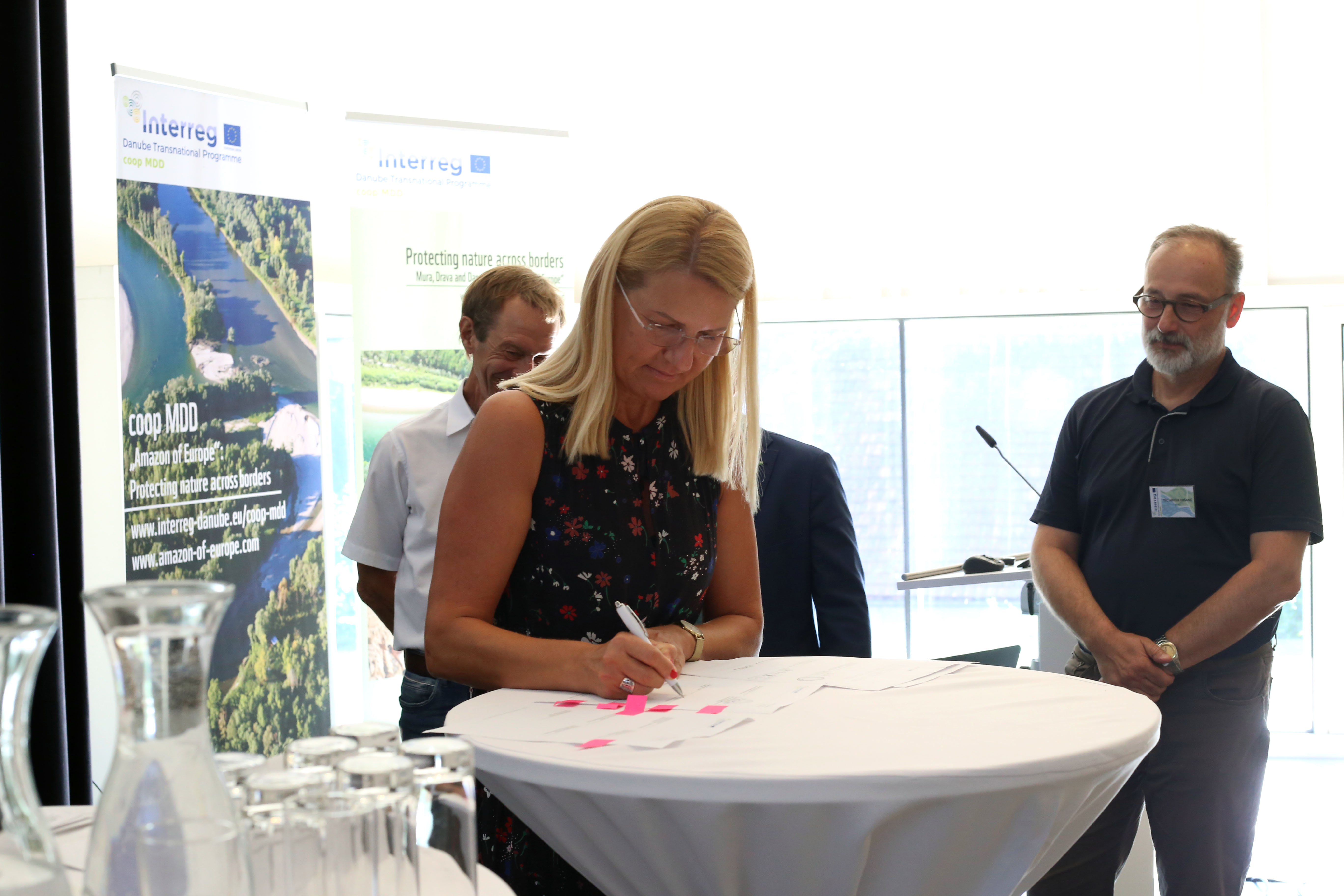
Final Conference © WWF
Related Posts
The Mura Drava
Danube BR
